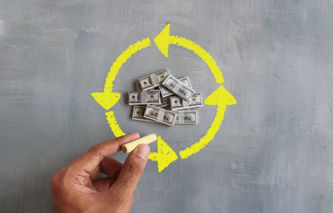Definition
The term cash to current assets ratio refers to a metric that allows the investor-analyst to understand the proportion of cash residing in current assets. Calculating the cash to current asset ratio is considered the most conservative measure of a company's ability to pay off liabilities.
Calculation
Cash to Current Assets Ratio = (Cash + Short-Term Marketable Securities) / Current Assets
Where:
Short-term marketable securities are temporary investments one company might make in another company, with the hope of providing higher returns to its shareholders.
Explanation
Cash flow measures allow the investor-analyst to understand if the company is generating enough cash flow from ongoing operations to keep the company in a financially sound position over the long term. One of the ways to understand the ability of a company to pay off its liabilities is to calculate their cash to current assets ratio.
The investor-analyst can calculate a company's cash to current assets ratio if they wish to understand the proportion of current assets accounted for by cash. This measure helps the investor-analyst to determine if a company has enough cash on hand to pay off their debts or they would have to rely on other forms of current assets such as accounts receivable, which have to be collected from customers.
Calculating a company's cash to current assets ratio is considered an extremely conservative view of current assets, since it eliminates the need to relay on sales of inventory or the collection of accounts receivable from customers. Since cash and short-term marketable securities are a subset of current assets, the ratio can never be above 1.0.
Example
Company ABC's CFO is concerned about the company's ability to meet its short term obligations with cash. The CFO is looking for a conservative viewpoint, meaning she does not want to rely on the sales of inventory or the collection of accounts receivable from customers. The CFO asked her analytical team to calculate the company's cash to current assets ratio. The analysts pulled the company's most recent balance sheet, which revealed cash of $450,000, short-term marketable securities of $125,000, accounts receivable in the amount of $1,153,000 and inventory of $5,670,000.
Calculating the cash to current assets ratio:
= ($450,000 + $125,000) / ($450,000 + $125,000 + $1,153,000 + $5,670,000)= $575,000,000 / $7,398,000, or 0.078




